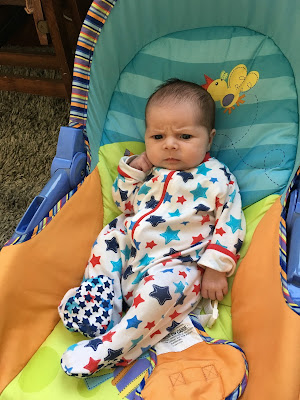Here is an article I contributed to ABC Science, originally posted here.
Five things we know about the universe that will make you feel very small.
One thing we know about the universe is that it's really big. Another is that thinking about it and trying to understand it will make your brain hurt.
Astronomer Amanda Bauer takes us through her top five mind-expanding things we know (or don't know) about the universe.
1. There is no edge of the universe
There is one edge we know of - our horizon, which is the limit of how far we can see.
Imagine sailing on a boat on the ocean and seeing a horizon in the distance, past which you know there is more Earth, but you just can't see it. We've measured the universe to be flat (as opposed to curved like Earth or saddle-shaped), but our horizon exists because of the finite speed of light.
Beyond that visible horizon, we think the universe just keeps going in the same way - forever.
We have no reason to believe there is an edge. But we also have no way of measuring this infinity because we physically cannot see it.
2. Dark matter and dark energy make up 95 per cent of the universe
Only 5 per cent of the universe is made of ordinary material like planets, stars, cars, and coffee. This "normal matter" is made mostly of protons, neutrons, and electrons.
Another 24 per cent is an exotic material that interacts through gravity, but produces no light, making it invisible to us. We call this "dark matter".
While dark matter only interacts with normal matter very weakly, particle physicists have plausible candidates for what dark matter is.
Hopefully particle accelerators like the Large Hadron Collider will provide more insight for scientists very soon.
That brings us to the final 71 per cent of the stuff in the universe, which is a truly bizarre type of matter. Perhaps it's not matter at all, but a property of the universe itself. We call this mysterious stuff "dark energy".
What we do know is that dark energy has a gravitationally repulsive effect that is causing the expansion of the universe to speed up. But we don't understand how this acceleration is happening.
3. There is no centre of the universe
The universe has been expanding ever since the Big Bang 13.8 billion years ago.
But the Big Bang should not be imagined as a normal explosion in space. Rather, the Big Bang is an explosion of space itself, so that every point in space expands equally away from every other point in space. There is no centre to the expansion.
From our galaxy we measure that all galaxies are moving away from us, and the farther the galaxy, the faster away it is moving.
The interesting thing is that if you zoomed off to any other galaxy in the universe, you would measure the exact same effect - all other galaxies would be moving away from you.
In this way, you could argue that you are the centre of the universe. But then, so is everyone else.
4. Far-away galaxies offer a glimpse into the past
When we look at distant galaxies, we are actually looking at a snapshot of the past.
Some galaxies are located so far away their light takes billions of years to reach us, even travelling at the speed of light. The images we collect through our telescopes tell us what the galaxies looked like billions of years ago, when the light left the galaxy.
Andromeda is the nearest spiral galaxy to our Milky Way. It floats at a distance of 2.5 million light-years, so the views we capture of Andromeda show us what it looked liked 2.5 million years ago. And that's the closest spiral galaxy.
The farthest galaxy we have detected is 13 billion light years away. This means we are looking at galaxy light as it was only 2 billion years after the Big Bang.
We will never capture light from the future though, only the distant past.
5. The future will be dominated by black holes
We are currently in the Stelliferous Era - meaning the universe has a lot of stars. This era began a few hundred million years after the Big Bang when the very first stars formed.
Now, almost 13.7 billion years later, new stars continue to form, although the number of new stars forming each year is dropping.
Eventually, new stars will stop forming and all stars will slowly burn out. But in that very distant future, supermassive black holes will still thrive.
It's believed that nearly every galaxy in the universe has a supermassive black hole at its centre, which means that eventually hundreds of billions of supermassive black holes will be spread throughout our ever-expanding universe.
Over trillions and trillions and trillions, and many more trillions, of years these black holes will slowly evaporate through Hawking Radiation.
The leftover elementary particles will be left to zoom through a vast, cold space with nothing much around to bump into.
Sounds very empty.






































